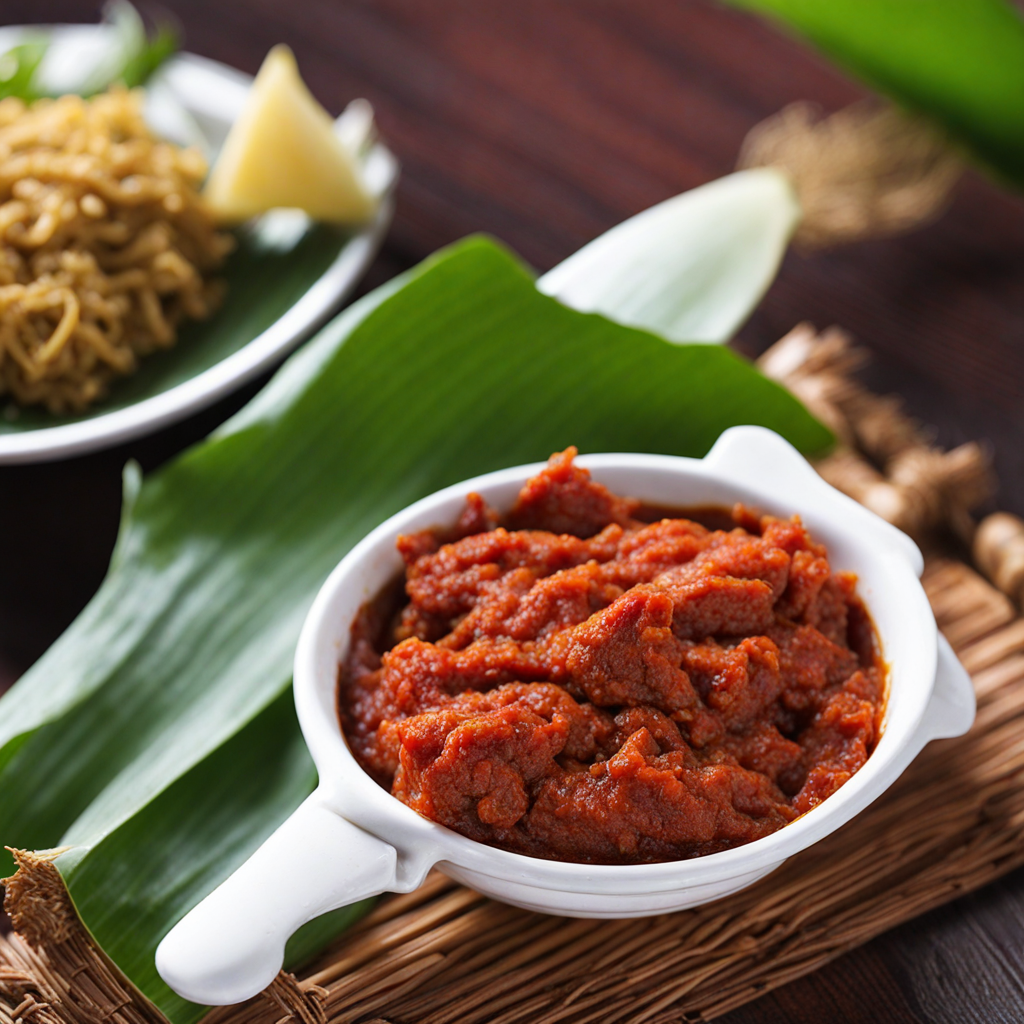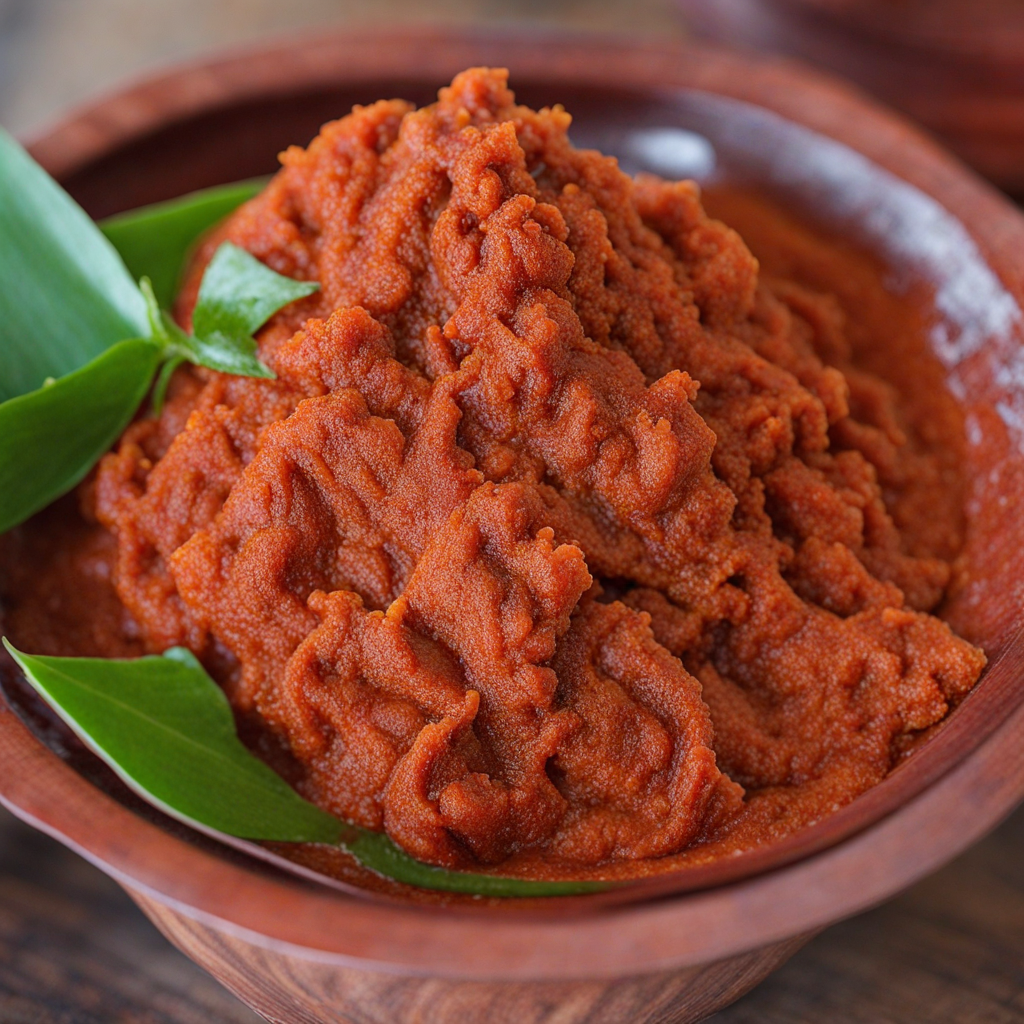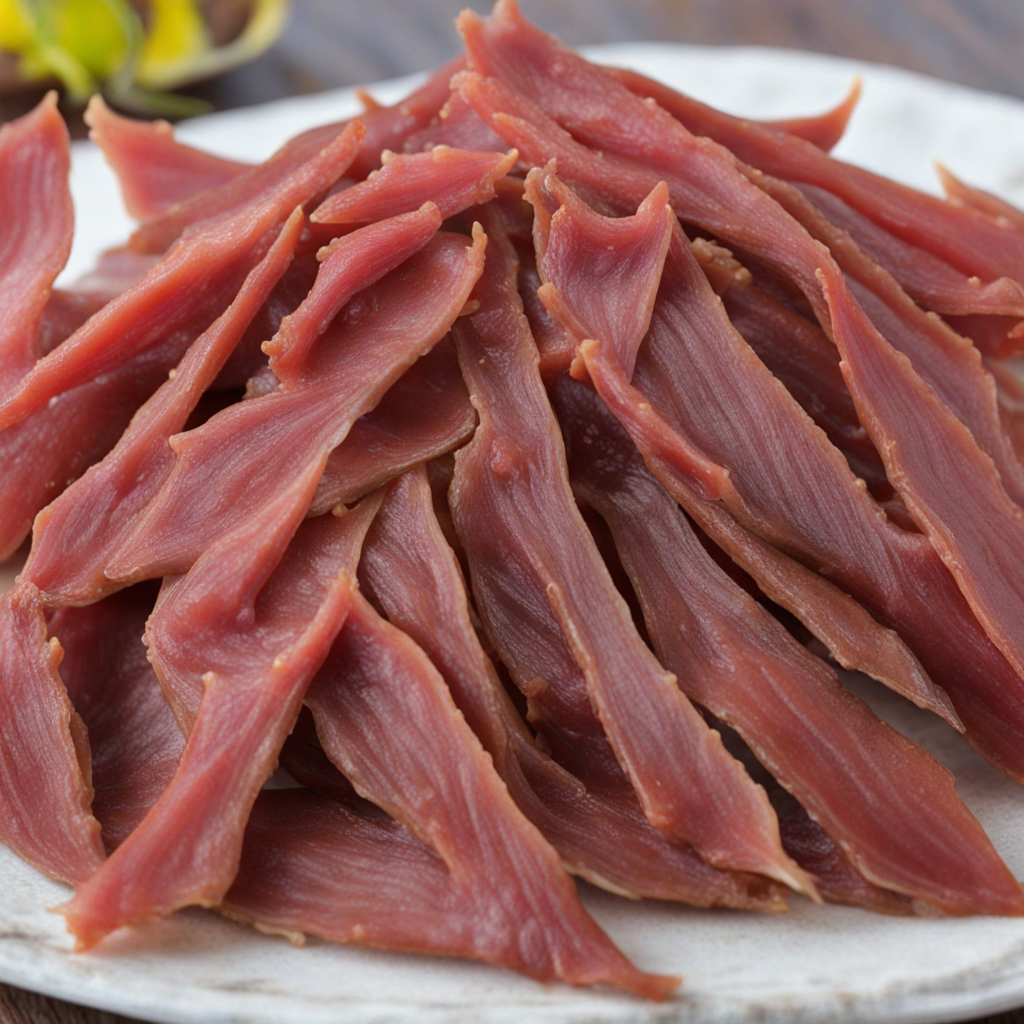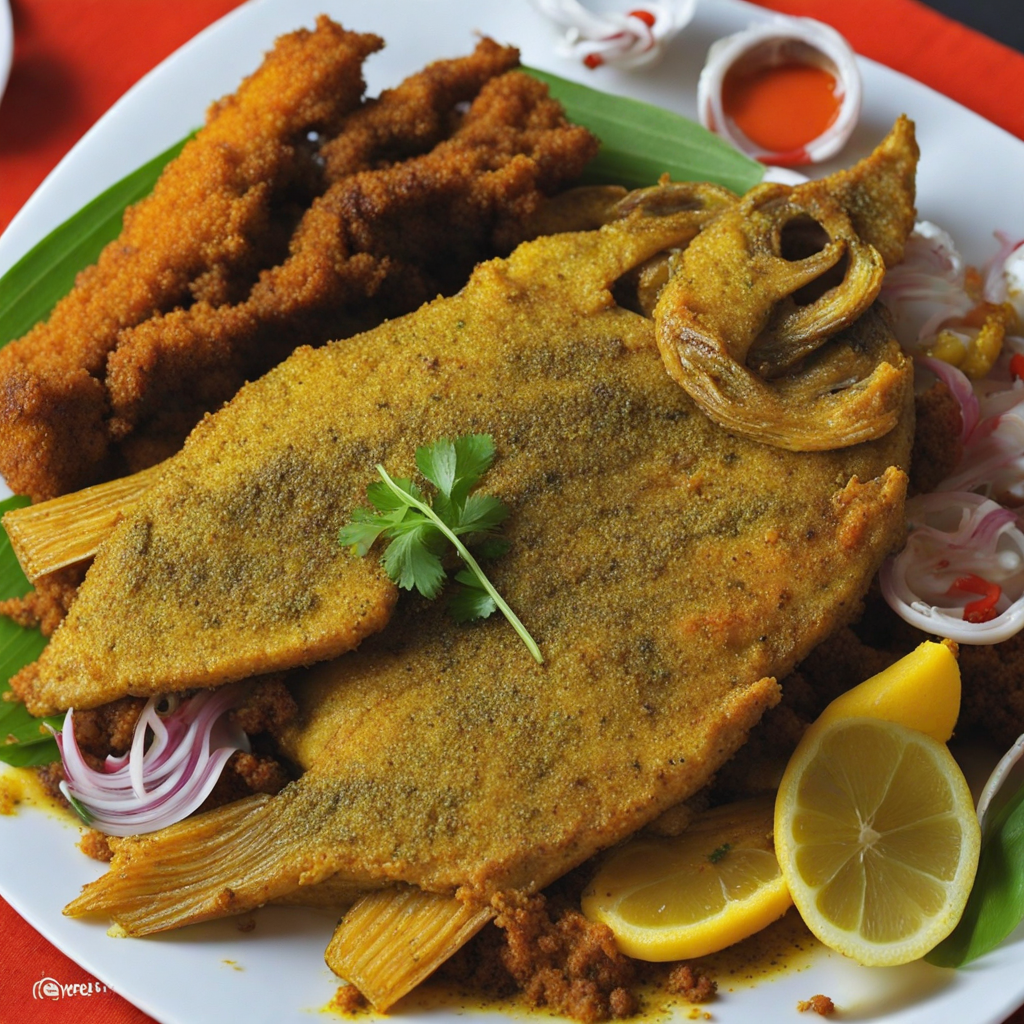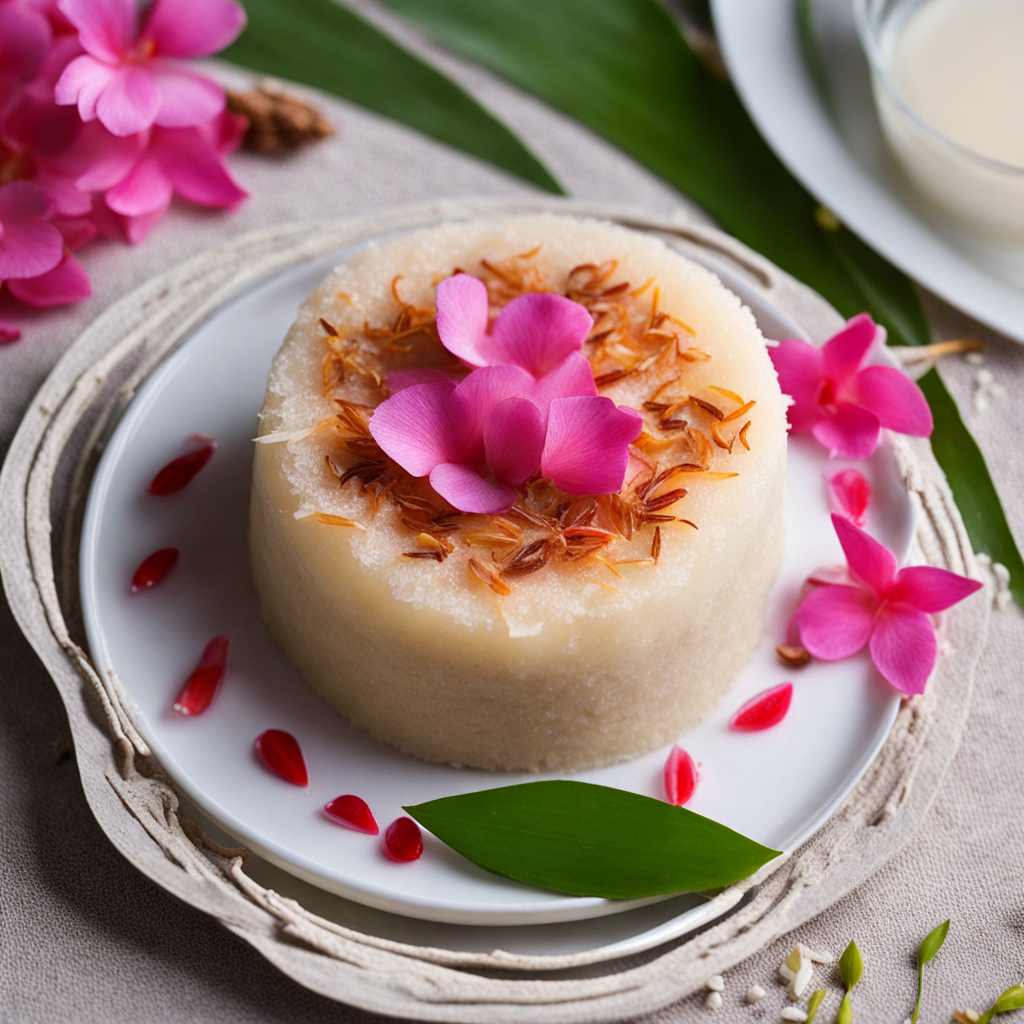Rihaakuru
Rihaakuru is a traditional Maldivian delicacy that embodies the essence of the archipelago's rich culinary heritage. This thick, dark, and luscious fish paste is made primarily from tuna, known locally as 'mas,' which is a staple ingredient in Maldivian cuisine. The process of making Rihaakuru involves simmering the fish for several hours, allowing it to break down and release its natural oils and flavors. The result is a concentrated and savory paste that captures the ocean's essence, often infused with spices and sometimes a hint of coconut for added depth. The taste of Rihaakuru is a delightful blend of umami and saltiness, with a subtly sweet undertone that reflects the quality of the tuna used. Its unique flavor profile makes it an excellent accompaniment to a variety of dishes, from simple rice meals to more elaborate spreads. When served, Rihaakuru can be enjoyed as a dip, paired with freshly baked flatbreads or served alongside side dishes like pickled vegetables or curries, enhancing the overall dining experience with its distinctive taste. For those eager to explore new culinary horizons, Rihaakuru offers a glimpse into the Maldivian way of life and its reliance on the bountiful sea. Its versatility allows it to be used in various recipes, including soups and stews, or even as a spread on sandwiches. Whether you are savoring it on its own or incorporating it into a meal, Rihaakuru promises a unique gastronomic adventure that will leave your taste buds craving more.
How It Became This Dish
The History of ރިހާކުރު (Rihaakuru) in the Maldives #### Origin and Cultural Significance Rihaakuru, a traditional Maldivian food, is more than just a dish; it's a symbol of the islands’ rich history and cultural identity. This thick, savory fish paste is primarily made from tuna, a staple ingredient in Maldivian cuisine due to the archipelago's abundant fishing grounds. The origins of Rihaakuru can be traced back centuries, as it reflects the historical reliance of the Maldivian people on the ocean and their fishing heritage. The name "Rihaakuru" derives from the Dhivehi language, where "riha" refers to fish and "kaakuru" translates to paste or sauce. Traditionally, it is made by boiling tuna until it breaks down, then grinding it into a thick paste, often enhanced with spices and coconut. This method of preparation is indicative of the Maldivian approach to food, which emphasizes simplicity, freshness, and the use of local ingredients. Historically, Rihaakuru served as a crucial source of sustenance for Maldivians, particularly during the monsoon season when fishing was often unfeasible. Its long shelf life made it an essential food item, allowing communities to stock up on nutritious provisions during times of scarcity. The dish is often consumed with rice or served as a condiment, making it a versatile and integral part of the Maldivian diet. #### Development Over Time The history of Rihaakuru is closely linked to the evolution of Maldivian society. The Maldives has been inhabited for over 2,500 years, with early settlers relying heavily on the resources provided by the surrounding ocean. Tuna fishing became a vital economic activity, leading to the development of various preservation techniques, including drying, smoking, and fermenting fish. It is within this context that Rihaakuru emerged. In the early days, the preparation of Rihaakuru was a communal activity, often involving family members gathering to process the catch. The method of boiling and grinding fish was labor-intensive, reflecting the communal spirit and the importance of sharing food in Maldivian culture. As the islands began to trade with neighboring regions, particularly during the rise of the Maldives as a trading hub between East Africa and Southeast Asia, the methods and flavors of Rihaakuru evolved. The introduction of coconut and spices into the Maldivian diet, influenced by traders and travelers, has also shaped the flavor profile of Rihaakuru. While the basic preparation remains unchanged, the inclusion of ingredients such as curry leaves, chili, and garlic has diversified its taste, showcasing the adaptability of Maldivian cuisine. #### Modern Perspectives In contemporary Maldivian society, Rihaakuru has maintained its significance while also evolving with modern culinary trends. The dish is a staple in many households, often prepared for special occasions and family gatherings. It is served alongside rice and coconut sambol, a spicy, tangy condiment made from grated coconut, chili, and lime. This combination embodies the essence of Maldivian cuisine: a marriage of flavors that reflect the islands' natural bounty. As tourism has become a major economic driver in the Maldives, Rihaakuru has found its way onto restaurant menus, often presented in innovative ways that appeal to international palates. Chefs now experiment with different styles of Rihaakuru, incorporating it into fusion dishes or using it as a filling for pastries and breads. This creativity has contributed to a resurgence in interest in traditional Maldivian foods among both locals and visitors. Moreover, the rise of sustainable fishing practices and a growing awareness of the importance of preserving traditional foods have led to a renewed appreciation for Rihaakuru. Many younger Maldivians are embracing their culinary heritage, recognizing that dishes like Rihaakuru not only provide sustenance but also connect them to their cultural roots. #### Rituals and Celebrations Rihaakuru is often associated with various cultural rituals and celebrations in the Maldives. It is commonly prepared during festive occasions, such as Eid al-Fitr and Eid al-Adha, where family members come together to share meals. The act of preparing Rihaakuru during such events is not only about nourishment but also about fostering community bonds. In addition, Rihaakuru plays a significant role in the Maldivian tradition of "Bodu Beru," a form of musical and dance expression. During Bodu Beru performances, it is customary for participants to share food, including Rihaakuru, symbolizing hospitality and the importance of community in Maldivian culture. Furthermore, with the increasing popularity of international cuisine in the Maldives, there is a growing movement to incorporate Rihaakuru into modern culinary practices while respecting its traditional roots. Culinary schools and workshops are now offering classes on Maldivian cooking, with Rihaakuru often featured as a highlight, allowing both locals and tourists to engage with the culture through its food. #### Conclusion The history of Rihaakuru is a testament to the resilience and adaptability of the Maldivian people. From its humble beginnings as a practical means of preserving fish to its status as a beloved dish that embodies the essence of Maldivian culture, Rihaakuru has evolved while remaining a vital part of the islands’ culinary heritage. As the Maldives continues to embrace globalization and modern culinary trends, Rihaakuru stands as a bridge between tradition and innovation, connecting generations and reminding the Maldivians of the richness of their cultural identity. In every dish of Rihaakuru served, there lies a story of survival, community, and an enduring connection to the sea that has shaped the history of the Maldives.
You may like
Discover local flavors from Maldives


